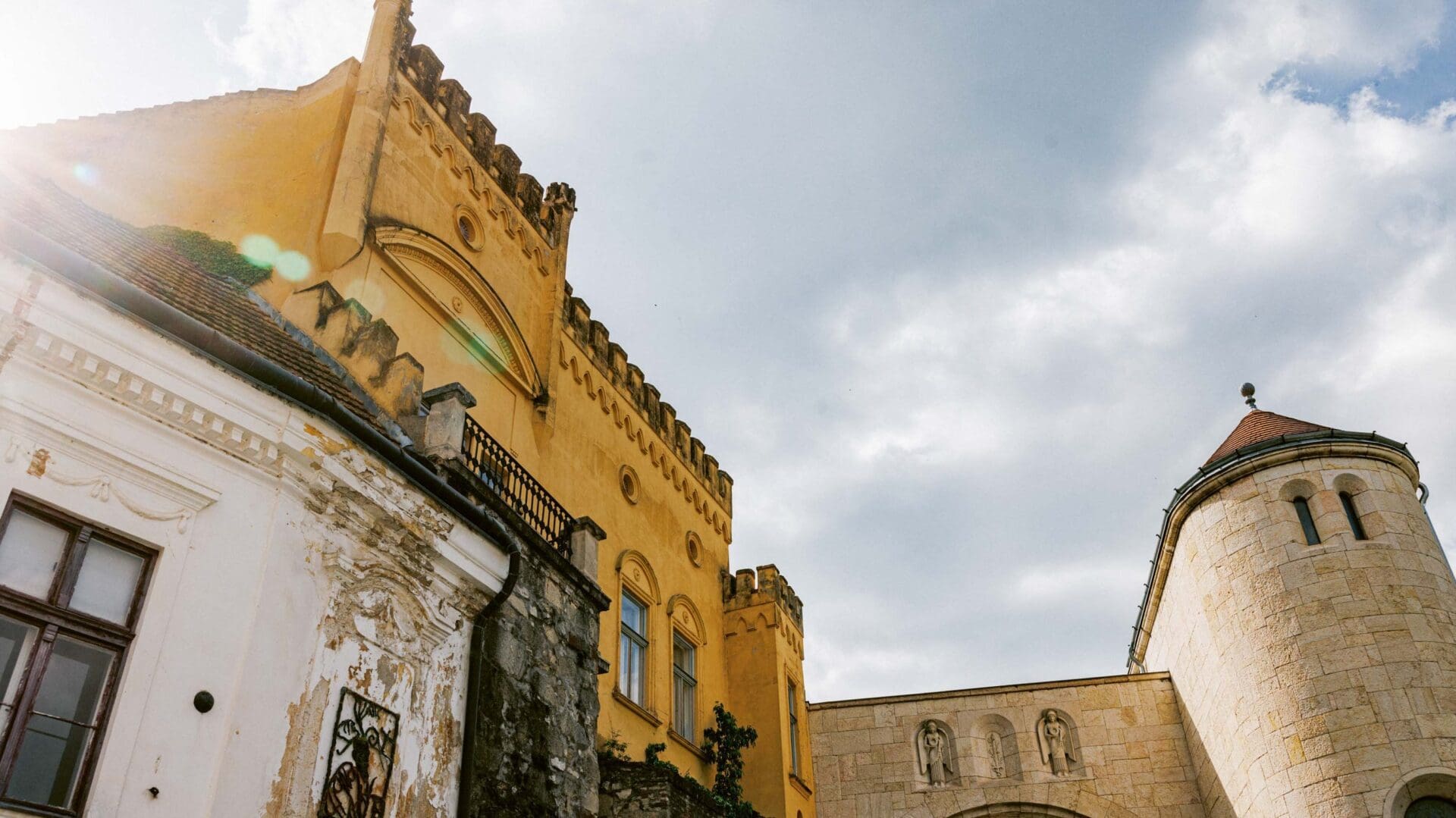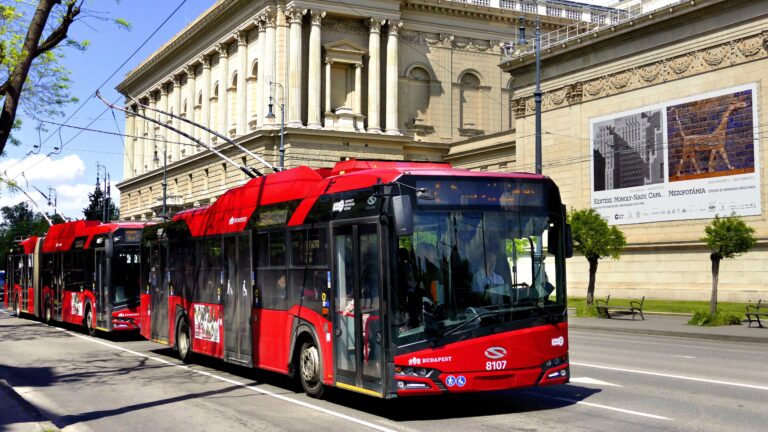The following is a translation of an article originally published in Magyar Krónika.
What is it that defines the character of a city? Is it its history? Its soil? Its location? Its built heritage? Or its inhabitants? Magyar Krónika spoke with Hajnalka Márkus-Vörös, archivist and local historian of the city of Veszprém, one of 2023’s European Capitals of Culture.
A Deep-Rooted Heritage
230 million years ago, the hilly alleys of today’s Veszprém were occupied by the Tethys Ocean. The secrets of the ocean fauna, some of which have already been uncovered, are preserved in the silt-enriched soil of the city to this day. In 1899, Piarist priest, teacher, and geologist Dezső Laczkó discovered one of the country’s most famous archaeological finds in the quarry on Jerusalem Hill. The remains of a placodont were first found here, making the city as well as its finder world-famous: the reptile became one of the symbols of Veszprém for a reason. Although the original creature may not have been a very nice-looking animal, a friendlier version of it can be seen in several places around the town. ‘The sculptures and paintings [of the reptile] are intended to make locals aware of their heritage and proud of it,’ Hajnalka remarks.
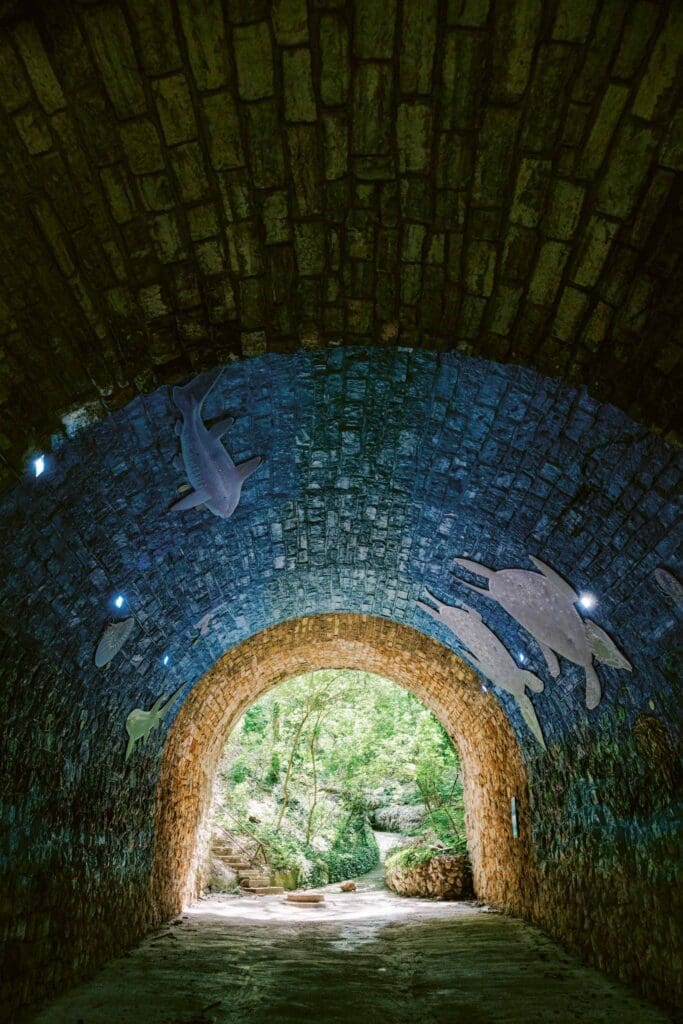
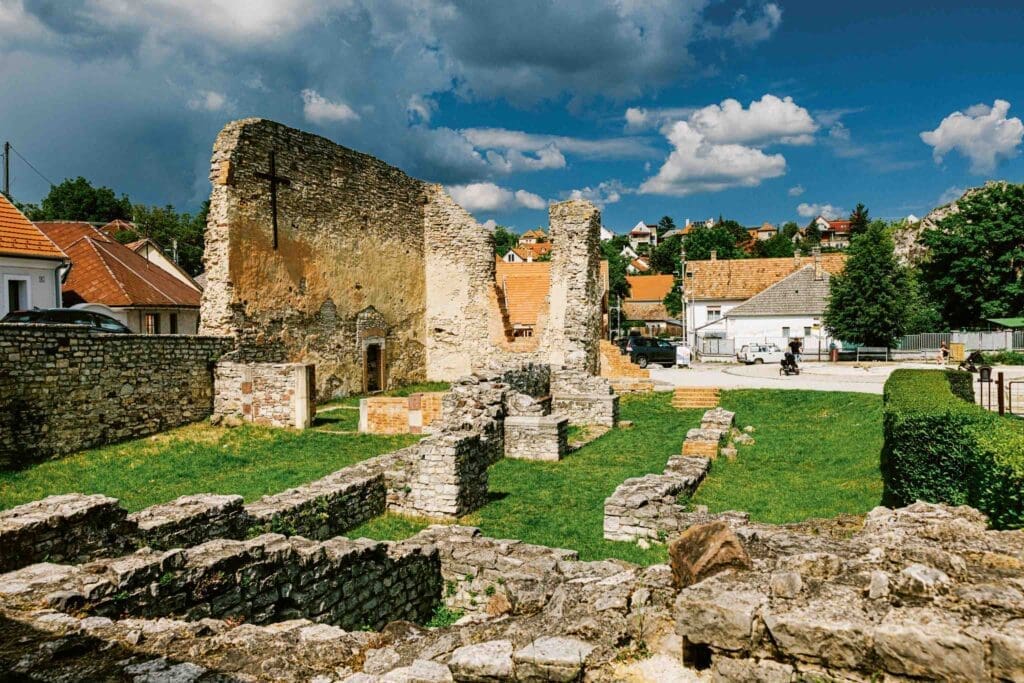
Monasteries and Gardens
The history of the town began on Castle Hill and in the Valley of the Séd Brook. The Byzantine monastery in the valley of Veszprém is one of the country’s earliest monastic institutions and the oldest building in the settlement, and its deed of gift is an important manuscript. Tradition has it that the nuns who lived here embroidered, with the help of Queen Gisela, the very vestment that later became the coronation robe of Hungarian kings. According to legend, Prince Emeric took his vow of chastity in the chapel of St George, not far from here, and a hundred years later St Margaret was raised in St Margaret’s Chapel, built on the banks of the Séd, under the protection of Dominican nuns, before she was moved to the Island of Rabbits (today’s Margaret Island). ‘The walking trail called Monasteries and Gardens is a wonderful reminder of the Byzantine tradition and the vibrant monastic life that characterised not only Veszprém but the whole region,’ Hajnalka says, linking the past and the present. ‘The most significant Hungarian Carthusian monastery was near the village of Városlőd. In the village of Somlóvásárhely, there were Premonstratensian sisters, while the Paulines preserved the faith in Nagyvázsony, and the Benedictines in Tihany and Bakonybél, reviving classical culture and enhancing the region’s splendour,’ Hajnalka adds.
The City of Queens
The Diocese and the Cathedral of Veszprém were founded by King Saint Stephen. According to tradition, Queen Gisela received the city as a wedding present from her husband, hence the right of the Bishop of Veszprém to crown the queen. For centuries, the town has therefore held a place of honour in the hearts of the spouses, which they have not failed to express with valuable gifts. ‘Let us not forget that many a daughter of noble families was brought up within the walls of the monasteries of Veszprém until she was married. However, when the planned fairy-tale future turned into a nightmare, for example, when the husband died and the wife found herself caught in the crossfire of power struggles, had to flee, or was driven away, she was often given refuge by the nuns. For many girls, Veszprém was probably also a place of safety, as it was considered the ‘City of Queens,’ recounts the archivist, explaining the origin of the name.
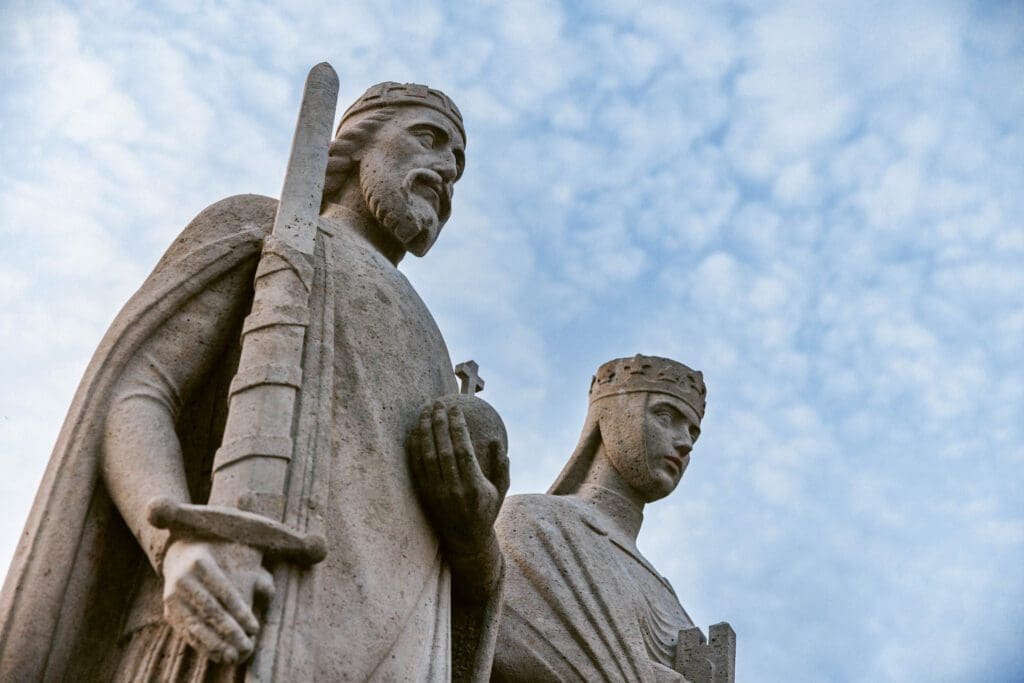
A City Built on Seven Hills?
While walking around Veszprém, whether approaching it from Budapest, Pápa, or Tapolca, we feel as if we are constantly climbing or descending hills. ‘This is because there are not really hills here, but valleys carved by water and wind. Nevertheless, the tradition that Veszprém was built on seven hills—Castle Hill, Benedek Hill, Jerusalem Hill, Cser Hill, Cemetery Hill, Gulya Hill, and Calvary Hill—holds true,’ points out the local historian. Each district of the city has its own origin story. For example, Jerusalem Hill stands directly opposite Castle Hill—we might easily think the name comes from the Jewish merchants who used to trade here, but it does not: its denomination dates back to the Reformation. The Bishop, who returned to the castle after the Turkish occupation, did not take kindly to the presence of Protestants and expelled them from the heart of the city. The Reformed families moved to the nearby hill and, hoping for peace, christened their new residence with reference to the heavenly Jerusalem. As Hajnalka suggests, ‘as many hills, so many characters. All of them are worth visiting, if only because there are so many hills, narrow or dead-end streets in Veszprém that it is not even worth driving. But there certainly aren’t as many panoramic plots of land anywhere else as there are here.’
Multi-Hearted Veszprém
Unlike other cities, Veszprém has no specific centre, although undoubtedly, one of the most important headquarters is the Castle Hill, as after the founding of the state, both secular and ecclesiastical power was concentrated on the well-defended hill. After the Battle of Mohács, it played an important defensive role as a fortress, but after the defeat of the Rákóczi War of Independence, it was blown up by the Habsburgs, who feared other resistance movements would use such fortresses as their base. This blow, however, marked not only the end of something but also the beginning of a new chapter. The bishops of Veszprém had the castle rebuilt in Baroque style and made it a place of ecclesiastical representation.
Besides, the Old Town Square is also a legitimate contender for the title of the centre of Veszprém. Due to its proximity to the Little Hungarian Plain, the Bakony Hills, and Lake Balaton, the settlement used to be an important commercial centre. Grain, wood, game, wool, wine, and fruit were exchanged at weekly fairs, and the crowds climbing up the narrow stairs leading to the square were greeted by taverns, inns, brothels, and tailor’s shops in Art Nouveau houses. However, the hustle and bustle died down with the expulsion of local Jews, changes in transport and commerce, and the relocation of shops to shopping malls. Thus, the square lost its original function. The municipality has therefore supported the opening of a number of new catering establishments here in recent years through the European Capital of Culture Programme, the aim of which is to rediscover this somewhat deserted space, bring it back to life, and make it vibrant again.
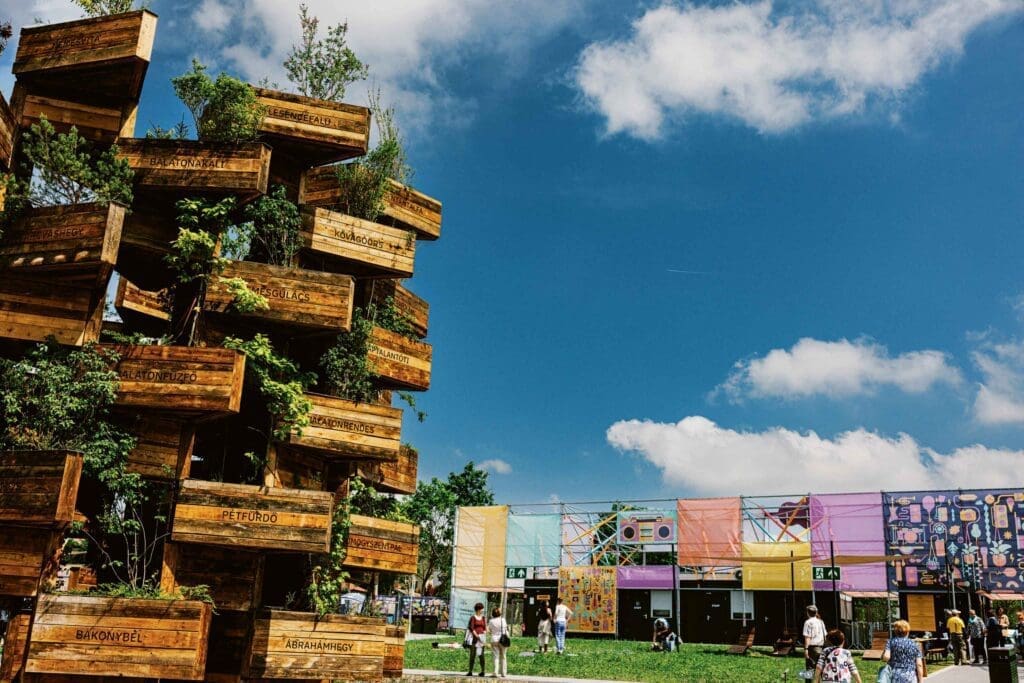
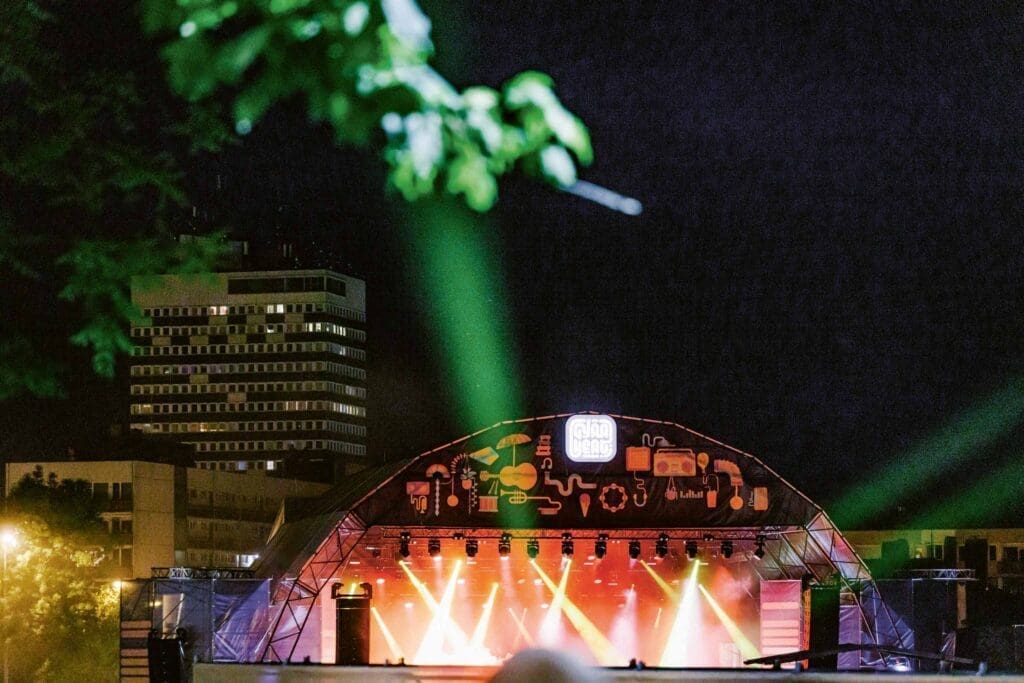
The other commercial centre of the city was the large market square around today’s Kossuth Lajos Street and Szent Imre Square. This part of Veszprém, however, became the victim of socialist ambitions.
According to the local historian, ‘the diversity of the urban structure, with its distinct ecclesiastical, administrative, commercial, and cultural centres, is also proof of the versatility and uniqueness of the city. Jenő Cholnoky, a geographer and writer, said that Veszprém has very good local energy. It is worth making the most of it.’
Culture Is the Past and the Future
Bishopric and trade or not, Veszprém has never been a very populous city. In 1945, it had only twenty-five thousand inhabitants, but in the 1970s, it was already more than double that, sixty thousand. The significant growth was partly due to the actions of János Pap, the powerful county Party Secretary of the Hungarian Socialist Workers’ Party (MSZMP), who wanted to turn Veszprém into an industrial centre. This intention, however, was accompanied by massive destruction and various constructions. The chemical university founded here and the research institutes set up alongside it, however, produced high-quality professional work, which attracted factories, and the studying and employment opportunities were appealing to young professionals, too.
‘Despite the difficulties and traumas, the positive thing was that there was a fresh atmosphere in the city. Many of the people who moved in then are still alive and the impetus of that period can still be felt today. The chemical industry is no longer the mainstay of the city, and trade has also faded. Veszprém is clearly looking for its place. However, it is close to Budapest, Vienna, Győr, and Lake Balaton, the landscape is beautiful and its location and millennia of tradition all destine it to be a cultural capital and a gastronomic centre. It has all the necessary ingredients,’ the local historian concludes.
All the photos in this article were taken by Árpád Földházi.
Related articles:
Click here to read the original article.

